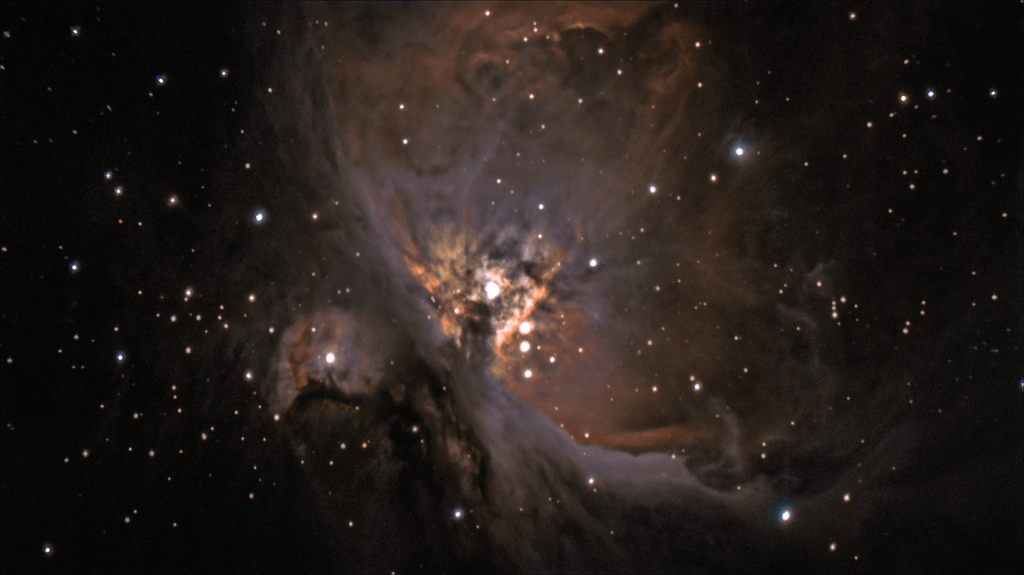
Orion Nebula M42 (29 November 2019)
This is my astrophotograph of the Orion Nebula M42, located just south of the ‘belt’ in the well-known constellation, Orion, and easily visible by eye. The Orion Nebula is a massive bright star formation region with clouds of cold neutral dust, stars, ionised gas, turbulent motion, and reflection nebulae. The dense cluster of young stars at the center is responsible for the Orion Nebula’s illumination. It is 24 light years across, appears from Earth to be the size of two full moons, and has a mass of about 2000 times that of our Sun.
The Orion Nebula’s high dynamic range (i.e. spread of brightness from very bright to very faint) meant I had to take photographs at three different exposure levels and merge them together in post-processing. This enabled me to avoid either over-exposing the center, or losing the faint surrounding detail. The high brightness, or more accurately, the strong signal-to-noise ratio, also allowed me to take only about 10 subs at each exposure level (usually many more are needed for faint objects to average out the noise before stretching out the signal). I was therefore able to squeeze the data collection here into only about 30 minutes on the 29 November, in between imaging the Christmas Tree Cluster and the Embryo Nebula. Of course, with more data the image would be more detailed—usually, the aim is to gather as much data as possible—but I’m happy with this all the same.
Frames
- 10× 130-s light frames
- 10× 60-s light frames
- 8× 30-s light frames
- 107× 130-s dark frames (used on all lights frames regardless of exposure time)
- 44× flat frames
- 40× dark flat frames
- 114× bias frames
Equipment
- Explore Scientific ED 102 mm Apo f/7 refractor
- Sky-Watcher EQ5 PRO SynScan GOTO equatorial mount
- Altair GPCAM3 290C colour camera (with UVIR window fitted) and 0.5× reducer
- Altair 60mm guide scope
- Altair GPCAM2 AR0130 mono guide camera
Software
- Sharpcap
- PHD2
- DeepSkyStacker
- Photoshop

